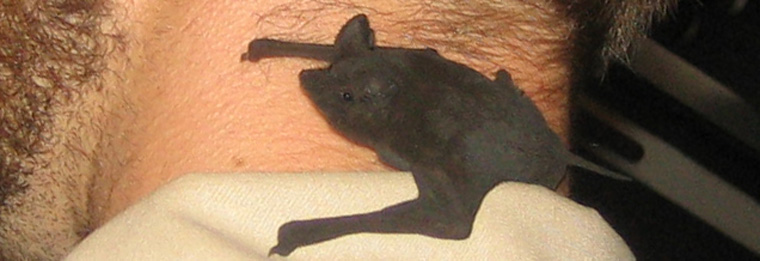-
info@aaanimalcontrol.com
Call us for help in your town
Humane Wildlife Education
Do All Types of Bats Carry Rabies?
Need bat removal in your hometown? We service over 500 USA locations! Click here to hire us in your town and check prices - updated for year 2020.
No, not all bats carry rabies. In fact, the percentage of bats affected by rabies is substantially lower than the percentage found in other species that are known carriers of the disease. As a matter of fact, less than half of 1% of all bats may contract rabies, and approximately 5% of sick bats turn out to be rabid.

These statistics are pretty comforting taking into consideration various gruesome headlines and stories circulating in the media that will have you believe that bats spread rabies more than any other wild animals, that hundreds of people die annually in the US because of bat rabies, or that urban bat colonies lead to more cases of rabies. Here are some facts:
- Worldwide, 99% of people who have died of rabies have contracted the disease from rabid dogs;
- In the US, a maximum of two people a year die of bat rabies;
- Statistically speaking, in the US, it's more likely for someone to catch leprosy than it is for them to catch rabies from a bat;
- Bat rabies is not airborne;
- You cannot catch the disease by contact with an infected bat's guano or urine.
- If a bat is on the ground, it's almost certain that you're dealing with a sick bat;
- Don't ever pick up a bat without wearing protective gloves;
- Rabid bats can not only transmit the disease through biting, but also through saliva (if the saliva gets on a fresh wound);
- Children need to be taught not to handle bats in uncontrolled environments;
- All pets should be inoculated against rabies;
- Although it's pretty hard to not notice the pain caused by a bat biting you, you should always consult with a health care professional if you wake up with a bat in your room, or if a child has been alone in a room where a bat has been discovered;
- Intoxicated people who have had contact with a bat should be consulted by a medic, as should people with mental disabilities, even if they do not report a biting incident – it's always possible that the bat may have bitten them, but they didn't notice the bite due to their respective impairments.
- Rabies is 100% treatable through post-exposure vaccination, but only if caught early. If post-exposure prophylaxis (PEP) is not administered in time, rabies is fatal.
For more information, you may want to click on one of these guides that I wrote:
How much does bat removal cost? - get the lowdown on prices.
How to get rid of bats - my main bat removal info guide.
Example bat removal photographs - get do-it-yourself ideas.
Bat job blog - learn from great examples of bat jobs I've done.


















